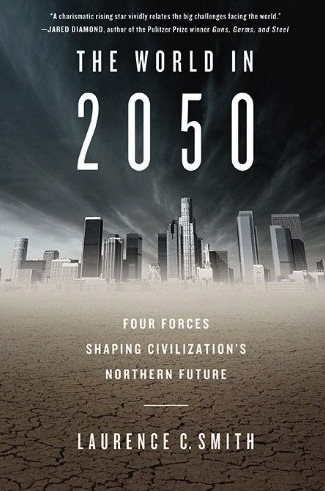

Most ebook files are in PDF format, so you can easily read them using various software such as Foxit Reader or directly on the Google Chrome browser.
Some ebook files are released by publishers in other formats such as .awz, .mobi, .epub, .fb2, etc. You may need to install specific software to read these formats on mobile/PC, such as Calibre.
Please read the tutorial at this link: https://ebookbell.com/faq
We offer FREE conversion to the popular formats you request; however, this may take some time. Therefore, right after payment, please email us, and we will try to provide the service as quickly as possible.
For some exceptional file formats or broken links (if any), please refrain from opening any disputes. Instead, email us first, and we will try to assist within a maximum of 6 hours.
EbookBell Team

0.0
0 reviewsSmith, a UCLA geography professor, explores megatrends through computer model projections to describe "with reasonable scientific credibility, what our world might look like in forty years' time, should things continue as they are now." Laying out "ground rules" for himself--including an assumption of incremental advances rather than big technology breakthroughs and no accounting for "hidden genies" such as a decades-long depression or meteorite impact--he identifies four global forces likely to determine our future: human population growth and migration; growing demand for control over such natural resource "services" as photosynthesis and bee pollination; globalization; and climate change. He sees the "New North" as "something like America in 1803, just after the Louisiana Purchase... harsh, dangerous, and ecologically fragile." Aside from his observations of "a profound return of autonomy and dignity to many aboriginal people" through increasing political power and integration into the global economy, Smith's predictions, limited by his conservative rules, are far from earthshaking, and suspending his rules for a chapter, he admits that "the physics of sliding glaciers and ice sheet collapses" as well as melting permafrost methane release are beyond current models, and that even globalization could reverse, with "political genies even harder to anticipate than permafrost ones."
Copyright © Reed Business Information, a division of Reed Elsevier Inc. All rights reserved.
How will civilization change over the next 40 years if humanity balloons to nine billion, sea level rises by a foot and atmospheric temperature by several degrees, and globalization continues apace? From those assumptions, Smith, a university-employed geophysicist, posits answers with a focus on the Arctic Ocean and its coastline. Familiar with the Far North through scientific field trips, Smith embeds personal observations into his predictions about the effects of boreal warming. Becoming more accessible to ships, Arctic regions in Russia, Alaska, and Canada will experience a raw-materials bonanza, with oil, natural gas, minerals, and water resources likely to be exploited as permafrost melts and summer sea ice recedes. Festooned with data, his discussions of such prospects valuably avoid either environmental or industrial advocacy and lay a factual foundation for his readers to learn how demographic and economic trends in the world’s southerly population belts might influence development of the Arctic. Concluding with a half-dozen events that could upset his forecast, Smith exhibits trend-spotting skill in this readable account of the Arctic frontier. --Gilbert Taylor